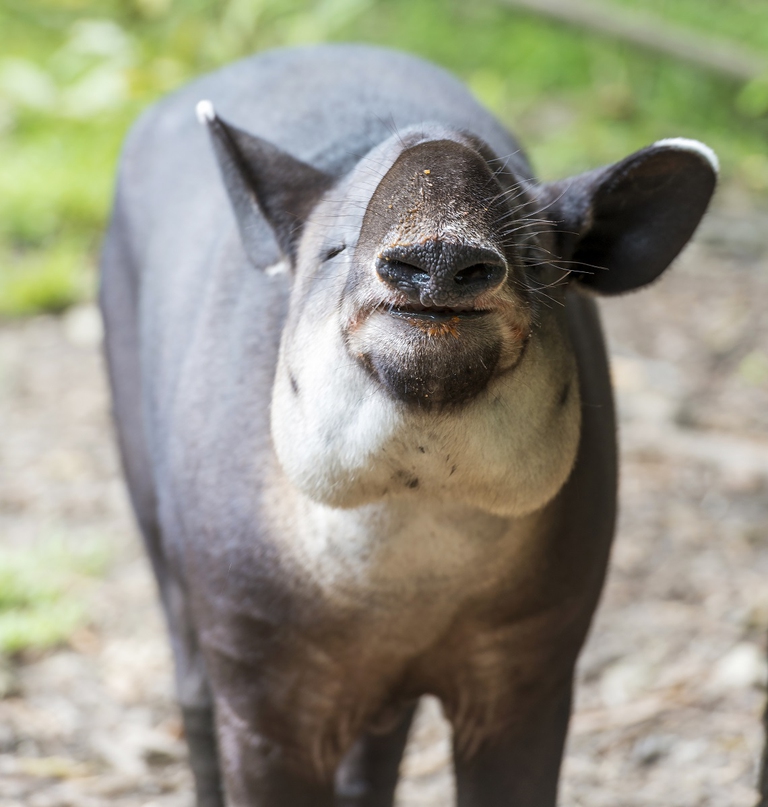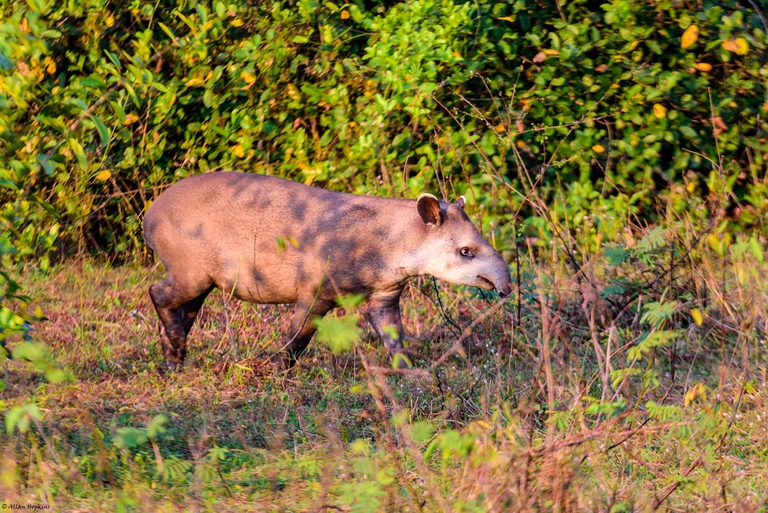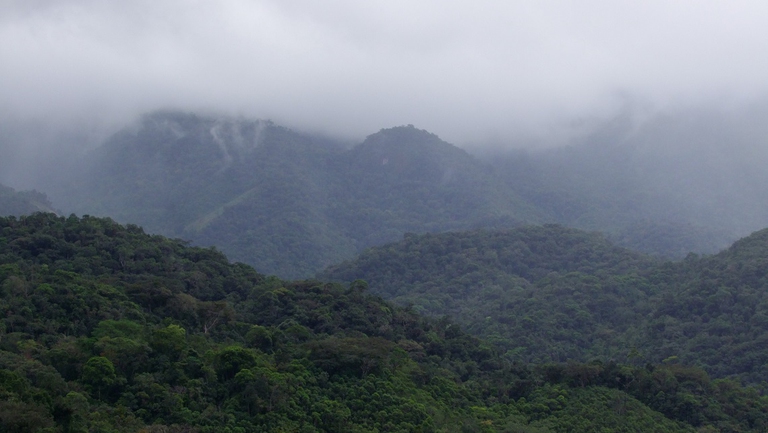
The Amazon became an alternative classroom during the pandemic. Now, the educational forest in Batraja, Bolivia, lives on to teach children and adults the value of nature.
The tapir was reintroduced into Brazil’s Atlantic Forest, the country’s most at-risk ecosystem. The species can play a key role in the forest’s recovery.
The tapir is an important species, crucial to its ecosystem because so many others depends on it. These strange, funny-looking creatures – the last remaining specimens of the Perissodactyla order – are thus able to literally shape the environment they inhabit. Tapirs ingest seeds from fruit and move over great distances, crossing different habitats and defecating along the way, thus dispersing the seeds. This allows for the flow of plant genes between habitats, especially the most degraded ones, as a study published last year highlights.
Their presence is extremely important, both in guaranteeing the preservation of flora and fauna biodiversity and contrasting the effects of climate change. In fact, tapirs ensure the survival of the largest trees (whose seeds can only be dispersed by larger animals), those with the highest carbon-storing potential. For these reasons, when a South American Tapir (Tapirus terrestris) was born in the wild for the first time in over a century, in Brazil‘s Atlantic Forest, one of the country’s most degraded ecosystems, the news was met with joy and jubilation.
The calf was photographed thanks to a camera trap and was spotted in the Guapiaçu ecological reserve in the Atlantic Forest, not far from Rio de Janeiro. It’s thought to have been born in January, a testament to the efficacy of the reintroduction project which began eight years ago. The images also showed a female tapir that appears to be pregnant, so there could be another calf on the way.
Since 2017, seven tapirs raised in captivity, four males and three females, have been reintroduced to the forest as part of the Refauna programme, led by a group of researchers at the Federal Institute for Education, Science and Technology in Rio de Janeiro. “The whole team is very happy,” says Maron Galliez, the biology professor leading the programme. “Now we know the project is heading in the right direction”.
To explain the numerous positive effects caused by the reintroduction of tapirs, whose presence accelerates the recovery of degraded natural habitats, The Guardian aptly compared these animals to wolves in Yellowstone and beavers in the United Kingdom.
The reintroduction of wolves to Yellowstone National Park in 1995 radically changed the environment’s appearance and physical geography; among other things, it favoured a decrease in deer populations and consequent increase in vegetation, with cascading benefits for the entire ecosystem. A comparably fast and extraordinary environmental recovery is happening at the moment in the UK where, beavers have been reintroduced after centuries of absence. Thanks to their engineering prowess these large rodents have had a positive impact on vegetation and on many species of wildlife as well as water quality. They have even contributed to reducing the risk of flooding.
In a similar manner, the return of tapirs could favour the restoration of the Atlantic Forest, an enormous wooded area that used to cover over a million square kilometres along the eastern coasts of Brazil and Argentina. For decades, deforestation has impoverished and segmented the forest and the expansion of urban settlements has drastically reduced its size.
Even in its fragile state, this ecosystem is still important to the globe because of the vast quantities of carbon it can store. It’s also home to an amazing variety of wildlife, including jaguars, whose numbers are finally increasing. The tapir could be an essential addition to this biodiversity after having disappeared completely from Rio de Janeiro state in 2014. “The birth of a tapir in the wild points to the establishment of a population in the state,” Galliez explains. “This is crucial to restore the ecosystem’s proper functioning”.
Tapirs are the best gardeners that the Atlantic Forest could want: efficient, economical, dispersing a large variety of seeds – from over twenty plant species – as well as pruning leaves and branches. However, researchers warn that their numbers are still extremely low and more efforts will be needed to increase their population and protect their habitat, especially from the pressures generated by the food industry.
Siamo anche su WhatsApp. Segui il canale ufficiale LifeGate per restare aggiornata, aggiornato sulle ultime notizie e sulle nostre attività.
![]()
Quest'opera è distribuita con Licenza Creative Commons Attribuzione - Non commerciale - Non opere derivate 4.0 Internazionale.
The Amazon became an alternative classroom during the pandemic. Now, the educational forest in Batraja, Bolivia, lives on to teach children and adults the value of nature.
Our species took its first steps in a world covered in trees. Today, forests offer us sustenance, shelter, and clean the air that we breathe.
Bangladesh suffered widespread damage as a result of Cyclone Amphan. Yet the Sundarbans mangrove forest acted as a natural barrier protecting the country from further destruction, as it has done countless times before.
On top of a 2.4 million dollar compensation, the indigenous Ashaninka people will receive an official apology from the companies who deforested their lands in the 1980s.
Forests are home to 80 per cent of the world’s terrestrial biodiversity. This year’s International Day of Forests highlights the urgent changes needed to save them.
After a legal battle that lasted two years, Indonesia’s Supreme Court has revoked the permit to mine for coal in the forests of South Kalimantan in Borneo.
The list of human and animal victims of the Australia wildfires keeps growing – one species might already have gone extinct – as the smoke even reaches South America.
Areas where the FARC guerrilla used to hold power in Colombia have faced record deforestation. Farmers cut down trees, burn land and plant grass for cows. Because, “what else can we do for a living here in the Colombian Amazon”? An intimate report from the heart of the felled forest in Caquetá.
Refusing the anthropocentric vision and respecting the laws of ecology is the only way to safeguard the future of our and all other species, Sea Shepherd President Paul Watson argues in this op-ed.










